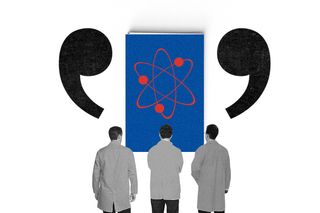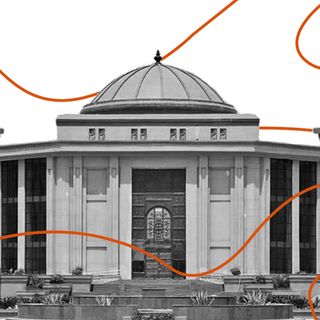
69% of Experts Quoted By a Leading Science Publication Were Men: Study
The new analysis of ‘Nature’ journal points out the prevalent gender bias where “women’s roles, if anything, [is] just to assist men in their important work.”

69% of the direct quotes from experts in Nature, a leading international scientific journal, were from men, according to a software analysis published yesterday on bioRxiv.Nature, too, endorsed the analysis in an editorial.
Conducted by two U.S. scientists, the analysis covered more than 16,000 Nature articles published over the last 15 years — between 2005 to 2020.
However, Nature isn’t alone. Four media agencies, including Agence France-Presse, also worked with Gender Gap Tracker, an automated system created by a Canadian team, to analyze five days of their news coverage last November. They found that 73% of the quotes they carried were from men, suggesting a clear gender bias.
When scientific publications, and even the media, continue to project men as experts across disciplines, it serves to condition society, which already associates the trait of ‘brilliance’ with men over women. “Prioritizing male experts devalues women’s work, depriving them of the recognition and public acclaim they might get if they were male,” Amanda Taub, a former human rights lawyer, wrote in Vox in 2016. And in doing so, it perpetuates the prevalent gender bias and “reinforces a general impression that men are the experts worth listening to, and women’s roles, if anything, are just to assist men in their important work,” she added.
In 2016, Adrienne LaFrance, presently the executive editor of The Atlantic, analyzed the gender ratio of the sources for her reports and found only 25% of the people she had quoted were women. “[B]y failing to quote or mention very many women, I’m one of the forces actively contributing to a world in which women’s skills and accomplishments are undermined or ignored, and women are excluded,” she wrote.
Related on The Swaddle:
Female Students More Likely to Pursue Economics, STEM If They Have Female Role Models: Study
Unfortunately, the bias isn’t just restricted to STEM fields. A 2016 study found out that 80% of political science experts quoted in The New York Times’ election coverage between March 2015 through January 2016 were men. Another study found that the gender bias extended to national security and foreign affairs commentators as well. Reports have found that in India, too, 86% of panelists on news channels are men.
“By thus marginalizing women’s voices and perspectives, the Indian media essentially denies nearly a half of the population a chance to influence public opinion. This runs counter to the principles of fairness, equality, and democracy,” a 2019 report on the treatment of women by the Indian media read.
As Taub wrote, the bias doesn’t just reflect poorly on the media organizations, it also has long-term consequences. In India, for instance, despite girls consistently outperforming boys in board exams, when it comes to interaction in college classes, they participate less than their male counterparts, research has shown. This is due to a fear of peer judgment stemming from stereotypes like the gender-brilliance bias, according to researchers.
“We have written so many female geniuses out of history, they just don’t come to mind as easily. The result is when ‘brilliance’ is considered a requirement for a job, what is really meant is ‘a penis.’ We just don’t see women as naturally brilliant,” Caroline Criado Perez wrote in her book titled Invisible Women: Exposing Data Bias In A World Designed For Men.
Related on The Swaddle:
30% of India’s Science Decision‑Makers Must Be Women, Proposes Centre in Draft Guidelines
The gender bias is not only reflected in fewer women being quoted but also in the manner in which they’re quoted. In 2019, Ed Yong, a science journalist at The Atlantic, discussed how he had interviewed six men and only one woman for his article on the potential uses of CRISPR, a gene-editing technology. While the men were “all quoted for their professional expertise,” the woman was asked about “her experience as the mother of a child with a genetic disease.” Lamenting his sourcing, he wrote, “two of [CRISPR’s] pioneers… are women… And yet, if you read my piece, you could be forgiven for thinking that CRISPR was almost entirely the work of men.”
Although journalists across the globe are trying to consciously include more diverse voices, they believe that they cannot fix the situation without research and academic institutions meeting them halfway.
“Why doesn’t ISRO allow us to talk to someone like V.R. Lalithambika, who is the director of the human spaceflight mission? … Why doesn’t M. Vanitha get quoted in an article about Chandrayaan 2? … [I]t’s not so easy as simply writing to a scientist and receiving a reply … So, we need institutions to try to be more transparent and enable [the] inclusion,” Nandita Jayaraj, a science writer and editor, told The Swaddle last November.
“We recognize that we need to strive harder to find diverse sources across the world,” Nature noted in its editorial responding to the study.
Devrupa Rakshit is an Associate Editor at The Swaddle. She is a lawyer by education, a poet by accident, a painter by shaukh, and autistic by birth. You can find her on Instagram @devruparakshit.
Related


“Delay in Trial Constitutes Denial of Justice,” Chhattisgarh HC Says
